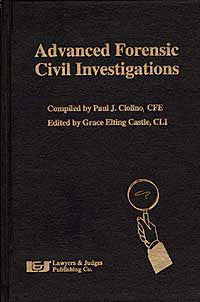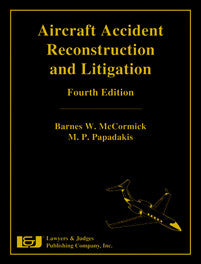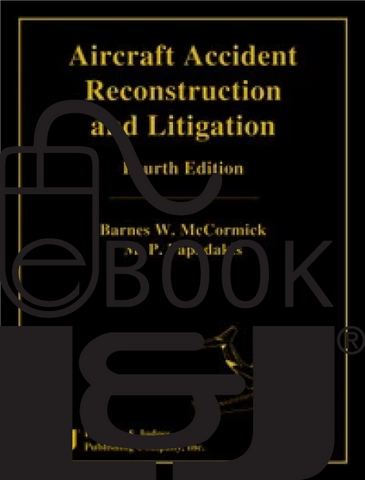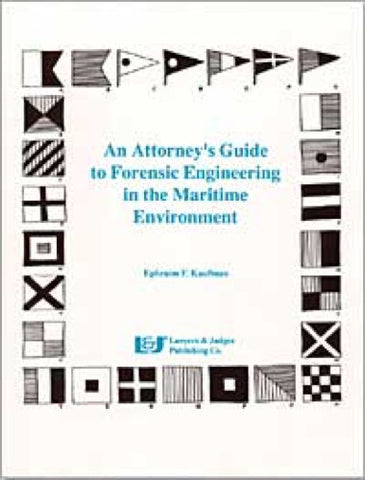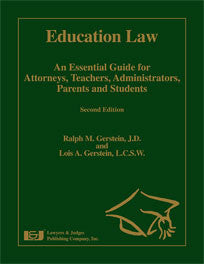
Education Law 2nd Edition
- Author: Ralph M. Gerstein & Lois A. Gerstein
- ISBN 10: 1-933264-22-5
- ISBN 13: 978-1-933264-22-6
- Copyright Date Ed: February 15, 2007
- Pages: 515 pages
- Binding Information: Casebound
- Size: 8.5 ✕ 11 Inches (US)
The legal relationship between student and school is a fragile one. Almost every area of law affects education institutions in some manner. The rights of students, parents, and school employees are governed by constitutional provisions and by federal, state and local statutes. Contract law, tort law, constitutional law, civil rights law, sports law and disability combine to form the basis of education law. For example, even the seemingly basic task of setting academic standards involves both contract law and the laws protecting individuals with disabilities. It may also include First Amendment issues since some professors and instructors have claimed that the right to determine grades falls under the First Amendment. Special education students of all levels, from the most severely disabled to the extraordinarily gifted, fall under a set of complex laws and regulations pertaining specifically to their education. These regulations cover everything from identification of special education students to providing services to administrative and litigation proceedings in special education cases. School choice considerations including out of district attendance, magnet, charter and private schools and home schooling have legal issues and regulations as well. Issues such as participation in team sports and other extracurricular school sponsored activities, administration of standardized tests, and part time public school attendance are all part of legislation and regulations pertaining to home schooled students. Zero-tolerance policies pertaining to drugs, alcohol and weapons and school policies on disciplinary action are also part of education law. Civil litigation involves diverse torts including accidents, sexual harassment and hazing. First Amendment speech issues, religion and separation of church and state, and civil rights and discrimination also affect students and educational employees.
Education Law, Second Edition is your comprehensive road map through the complicated legal situations in today's rapidly changing educational environment. It is your essential guide to creating legal standards for your school district and enforcing legal rights in the classroom. You will be guided through the rights of teachers and other school employees, parents, and students through case studies of previous legal actions. The authors, Lois and Ralph Gerstein, analyze these legal issues from the points of view of students, parents, and school personnel, providing a well-rounded explanation of how local, state, and federal laws are interpreted in numerous and diverse education-related cases.
Update to the Individuals with Disabilities Improvement Act of 2004
This book is also available as an eBook. Click here to purchase and download:
Topics include:
- Admissions, enrollment and school choice
- Academic issues involving students
- Special education
- Student conduct
- Disciplinary actions and procedures
- Zero tolerance policies
- Search and seizure and Fourth Amendment rights
- School violence
- First Amendment rights in the educational setting
- Religion in schools
- Civil rights and discrimination
- Students' records
- Torts and tort liability
- Home schooling
- School athletics and extra curricular activities
- Personnel issues
Table of Contents
1. Admissions, Enrollment, and School Choice
1.1 Residence and Domicile
1.2 School Choice and Accountability: No Child Left Behind Act
1.3 Admissions: Affirmative Action or Reverse Discrimination?
1.4 Recent Developments Regarding Race-Based Admissions or Enrollment
2. Academic Issues Involving Students
2.1 The Nature of the Legal Relationship between Student and School
2.2 Lawsuits for Breach of Contract
2.3 Lawsuits Alleging Misrepresentation, Fraud or Breach of Fiduciary Duty
2.4 Grades and Academic Standing
2.5 Claims of Educational Malpractice and Negligence Arising out of Academic Activities
2.6 Legal Rights of Students Taking Standardized Tests
2.7 School and College Tuition
2.8 The Obligation of School to Continue Program in Which Student is Enrolled
2.9 Mandatory Community Service as a Requirement for Graduation
3. Road Map to Federal and State Laws Protecting Students with Disabilities
3.1 Overview of Statutes Protecting the Rights of Students With Disabilities
3.2 The Americans with Disabilities Act (ADA)
3.3 The Rehabilitation Act of 1973- 29 United States Code Sec. 794-known as "Section504"
3.4 Disabled Students and School Athletics
3.5 Remedies and Litigation Under the ADA and Section 504
3.6 Individuals With Disabilities Education Improvement Act ("IDEIA")
4. Special Education Services
4.1 Overview of the Law Governing Special Education
4.2 Evaluation of Students
4.3 Procedures for Determination of Eligibility for Special Education Services
4.4 Decision Making Regarding Eligibility for Special Education Services
4.5 The Individual Education Program ("IEP")
4.6 Independent Educational Evaluations (IEE)
4.7 What It Means For A Student To Be "Classified"
4.8 Services For Students Who Are Not Classified- "504 Plans"
4.9 Gifted Students and Special Education
4.10 Pre-School Children
4.11 Mobile Families-—Moving To New State Or District
4.12 Procedural Safeguards
4.13 Electronic and Telephone Communications
5. Implementation of Services for Students with Disabilities
5.1 Overview
5.2 Right to Free and Appropriate Public Education (FAPE)
5.3 Right to Least Restrictive Alternative in Student Placements
5.4 In-School and Out-of-School Services.
5.5 Services for Students Having Particular Types of Disabilities
5.6 Students Reaching the Age of Majority
6. Administrative Proceedings and Litigation in Special Education Cases
6.1 Overview
6.2 Mediation
6.3 Complaint Resolution Procedure
6.4 Administrative Proceedings
6.5 Court Actions and Proceedings
6.6 "Stay put" Provision-Continuance of Current Placement Pending Administrative Hearing
6.7 Right of Parent to Represent Child in Special Education Proceedings and Litigation.
6.8 Remedies
6.9 Expert Witness Fees
7. Regulation of Student Conduct
7.1 Academic Dishonesty
7.2 Dress Codes
7.3 Hair Length
7.4 Earrings
7.5 Regulations Aimed at Gang Activity
7.6 Fraternities and Hazing
7.7 Regulation of Conduct Occurring Off-Campus
8. Disciplinary Sanctions Against Students
8.1 Overview
8.2 Denial of Bus Transportation
8.3 Corporal Punishment
8.4 Transfers to Alternative Schools
8.5 Exclusion from Vocational Programs
8.6 Exclusion from Extracurricular Activities
8.7 Exclusion from Graduation Ceremonies
8.8 Probation
8.9 Suspensions for Brief Periods
8.10 Withholding or Revocation of Degree or Diploma
9. Disciplinary Procedures
9.1 Public Schools and Colleges: Due Process
9.2 Private and Religious Institutions
9.3 Notice of Charges
9.4 Pre-Hearing Suspensions
9.5 Applications to the Court for Injunctive Relief
9.6 Impartial Decision Making
9.7 Confrontation and Cross-Examination of Witnesses
9.8 Right to Counsel or Other Representative
9.9 Disciplinary Procedures Distinguished from Criminal Cases
9.10 Evidence and Standards of Proof
9.11 Conduct of the Hearing and the Decision-making Process
9.12 Disciplinary Procedures for Disabled Students
9.13 Drafting a Fair Disciplinary Code
10. Drugs, Weapons, and Zero Tolerance Policies
10.1 Overview
10.2 Federal and State Legislation
10.3 School Discipline in Cases Involving Weapons or Drugs
10.4 The Dangers Posed by Inflexibly Applied Zero Tolerance Policies 199
10.5 Common Sense Policies As Alternatives to Zero Tolerance 201
11. Fourth Amendment–Search and Seizure
11.1 Overview
11.2 Search Based Upon Reasonable Suspicion of Unlawful Activity or Violation of School Rules
11.3 Searches of Persons and Property
11.4 Searches of Students’ Lockers
11.5 Drug Sniffing Dogs
11.6 Metal Detectors
11.7 Searches of Students’ Automobiles
11.8 Medical and Drug Testing
11.9 Legal Standards for Searches by Law Enforcement Officials
11.10 State Statutes Governing Searches
12. Controlling School Violence
12.1 Overview
12.2 Legal and Disciplinary Sanctions against Students Who Make Threats
12.3 Legislative and School Policies Regarding Bullying
12.4 Liability Based on Lack of Supervision
12.5 The Duty to Warn a Potential Victim of Threat of Harm
12.6 Assumption of a Specific Duty To Protect Students
12.7 The Duty to Protect Students from Attacks by Other Students
12.8 The Duty to Protect Students From Criminal Acts by Third Parties
12.9 The Duty of School District to Protect School Personnel from Assaults
12.10 The Duty of Colleges and Universities to Protect Students From Violent Acts
13. First Amendment Speech Issues
13.1 Overview
13.2 Teachers, School Personnel, and Outside Guest Speakers
13.3 Students
13.4 School Libraries
13.5 Right of Access to School Publications and Facilities
13.6 Speech Perceived as Offensive to Persons of Particular Race, Ethnicity, or Sex
13.7 School Board Meetings
13.8 Other Issues
14. Religion and The Schools
14.1 Overview
14.2 Prayer, Bible Reading or Moment of Silence During School Day
14.3 Prayer at School Sponsored and School Affiliated Activities—Athletic Events and Graduation Ceremonies, and School Board Meetings
14.4 Time Off for Religious Holiday or Religious Instruction
14.5 Limits Upon Religious Activity of Teachers
14.6 Limits Upon Religious Activity of Students
14.7 Clergy or Outside Religious Groups Present During School Day
14.8 Use of School Facilities to Publicize Activities or Distribute Religious Literature
14.9 Right of Religious Group to Meet on School Premises After School Hours
14.10 Use of University Funds by Student Religious Groups
14.11 Teaching of Evolution
14.12 Religious Beliefs as Grounds for Objections to Curriculum
14.13 Secular Curriculum—Incidental Mention of Religion
14.14 Religious Objections to School Health Measures
14.15 Display of Ten Commandments or Religious Objects
14.16 Government Funding of Services for Private and Parochial School Students
14.17 Impact of the "No Child Left Behind Act"
14.18 Pledge of Allegiance—Use of Words "Under God"
14.19 Employment Law Pertaining to Religious Schools
14.20 Other
15. Civil Rights and Discrimination Issues
15.1 A Road Map to Civil Rights Laws Affecting Students
15.2 Discrimination Based on Race or National Origin
15.3 Title IX-Rights of Male and Female Students, and Faculty Members
15.4 Gay and Lesbian Students
15.5 Federal Civil Rights Claims Against State or Local Official Who Violate Students’ Rights: 42 U.S. Code §§1981 and 1983
15.6 Proving a Case of Discrimination Based on Sex, Race or National Origin
15.7 Legality of Single Sex Schools
16. Student Records
16.1 Federal Educational Rights and Privacy Act (FERPA)—Overview
16.2 Records Covered and Records Excluded from Coverage
16.3 Access to Educational Records by Students and Parents [and other Interested Parties]
16.4 Release of Educational Records
16.5 Rights of Pupils
16.6 Amending the Educational Record
16.7 Limited Remedies Available Under FERPA
17. Civil Wrongs (Torts)
17.1 Overview of the Law of Torts
17.2 Defamation
17.3 False Imprisonment, Malicious Prosecution and Claims of Excessive Force
17.4 Negligence
17.5 Physical or Sexual Abuse of Student by Teacher or Other Staff Member
17.6 Intentional Destruction of School Property by a Student
17.7 Negligent or Intentional Infliction of Emotional Distress
17.8 Defense of Governmental Immunity
17.9 Fraternities, Hazing and Alcohol-Related Incidents
17.10 Dangerous Activities Involving Students
17.11 Student Suicides
17.12 Student Medical Issues and Tort Liability
17.13 Other Issues
18. Attendance and Home Schooling
18.1 An Overview of Compulsory Attendance and Home Schooling
18.2 The Growth and Development of the Home-Schooling Movement.
18.3 State Regulation of Home Schooling
18.4 The Right to Attend School on a Part-Time Basis
18.5 The Right of Home-Schooled Students to Participate in Extracurricular Activities or Team Sports
18.6 State-by-State Guide to Attendance and Home Schooling
19. School Athletics and Cheerleading
19.1 Overview
19.2 Assumption of Risk: In General
19.3 Assumption of Risk: Specific Applications
19.4 Assumption of Risk: Limitations
19.5 Claims of Improper Coaching, Equipment and Facilities
19.6 Cheerleaders
19.7 Violence in Athletics: School and College Liability
19.8 Medical Issues
19.9 Liability to Spectators
19.10 Validity of Releases
20. Selected School and College Personnel Issues
20.1 Overview
20.2 Equal Pay Act of 1963
20.3 Drug Testing of School Personnel
20.4 Granting and Denial of Tenure
20.5 The Limits of Tenure Protection
20.6 Right of Dismissed Non-Tenured Personnel to Name-Clearing Hearings
20.7 The Employment of Related Persons in School District (Nepotism)
20.8 Grounds for Discharge of School

